R. Land, artist behind ‘Pray for ATL,’ praises, satirizes Atlanta in work
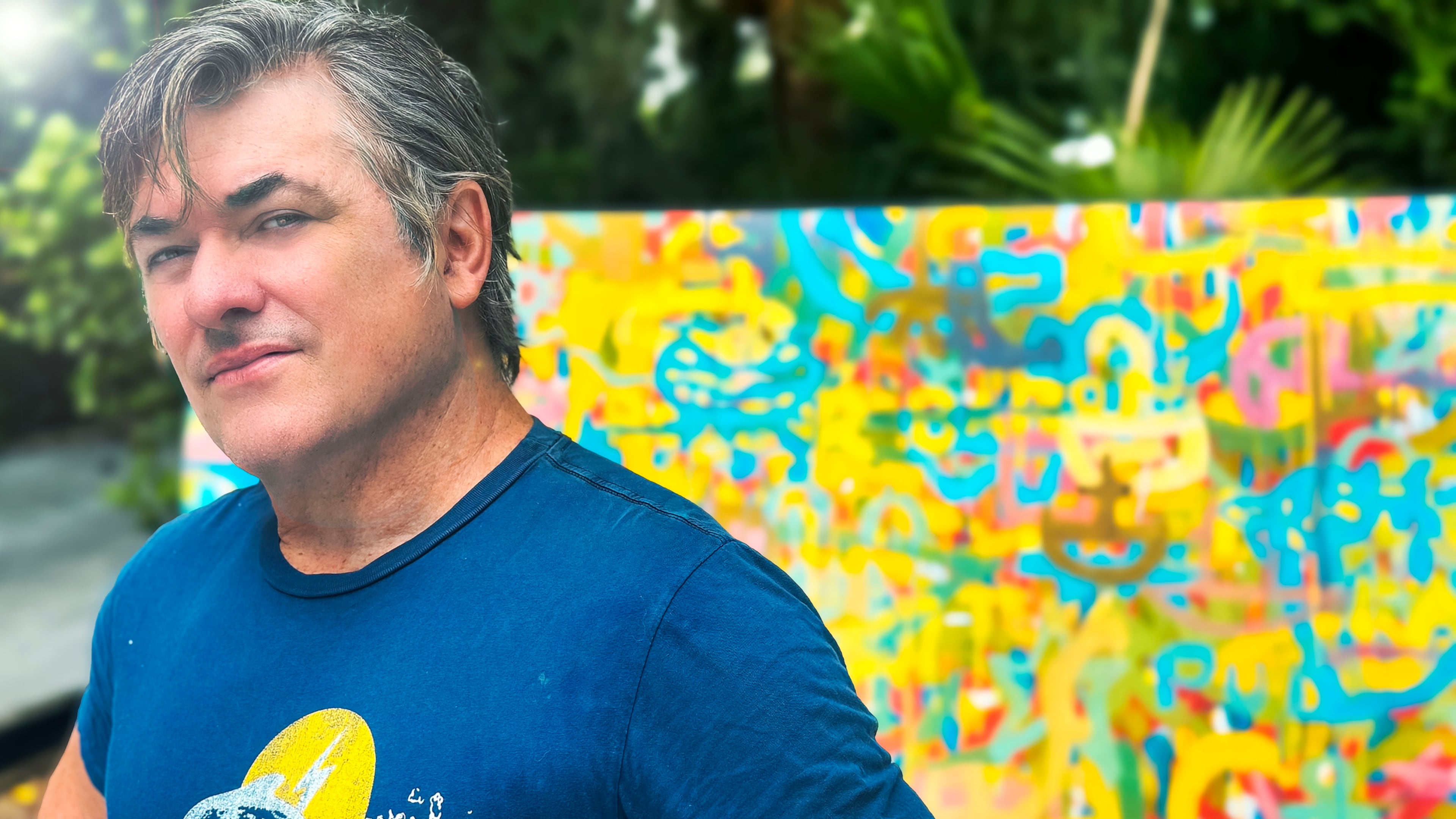
There are certain things you can bank on in the Atlanta landscape. Potholes. Flash floods. Plastic floss picks. And the image of a pair of reverently folded hands proclaiming “Pray for ATL” signed R.L. Ministries.
Created by the city’s arch satirist — artist R. Land — street art provocations like “Pray for ATL,” “Yuppie Ghetto” and his “Georgia Music Land” map have made this outspoken 6’2” merry prankster a local legend.
His cartoony, pop culture-surfing, outlandishly colorful works on paper or wood pop up on walls and telephone poles around the city, and include a wacky menagerie of animal characters — snails, alligators, bumblebees, ants, birds, Speckles the cat, Little Bunny Foo Foo, Scout the Ham Cat and a “wanted” poster for the most reckless feline of them all, Loss Cat (his most licensed artwork to date).
Over the course of his 30 years in Atlanta, Land has been commissioned to lend his feisty, subcultural cachet to a host of projects. He’s painted a Lexus at Ford Fry’s Attack of the Killer Tomato Festival, created copious murals around town, invented cartoon characters for Adult Swim and lent his artwork to an array of Hollywood films.
With an underground edge that culls from the sensibilities of Mad magazine, Disney, C-grade horror films and the carnivalesque novels of Carl Hiaasen and Harry Crews, R. Land’s art has become a beloved source of local pride that helps the city hold on to its grit even as generic franchises, gentrification and outrageous home prices erode it.
A folk hero gets feted
Now, the city that, in a sense, made him has finally given Land his due with a 30-year retrospective exhibition. “Landmarks: Inside the World of R. Land” runs through Sept. 7 at Atlanta Contemporary. The show is a celebratory stroll through career highlights and influences with the occasional deep cut: Andre Benjamin photographed in front of a praying hands mural, a 3D folk-art-inspired devil in teal undies inscribed with a Howard Finster frenzy of text, a wooden cut out of a demonic looking Little Bunny Foo Foo and a vitrine of merchandise.
Curator Floyd Hall, the museum’s former executive director and a longtime fan of Land’s, sees the show as a milestone for Atlanta Contemporary.
“This is an artist who has had a profound impact on the city,” said Hall, who took satisfaction in watching a remarkably diverse array of people from corporate types to hipsters geek out over meeting Land at the exhibition’s opening.
The R. Land adoration runs deep, His wry goosing of Atlanta’s pretensions and delusions has become intertwined with locals’ complicated love for the city.
Doug Walker of Roswell has been a fan and collector of Land’s work for three decades, including a framed print for an event featuring comedian David Cross. “It’s a personified cross carrying a sword in one hand and the severed head of the devil in the other … it’s so hilarious and so macabre at the same time, but it’s also very Atlanta.”
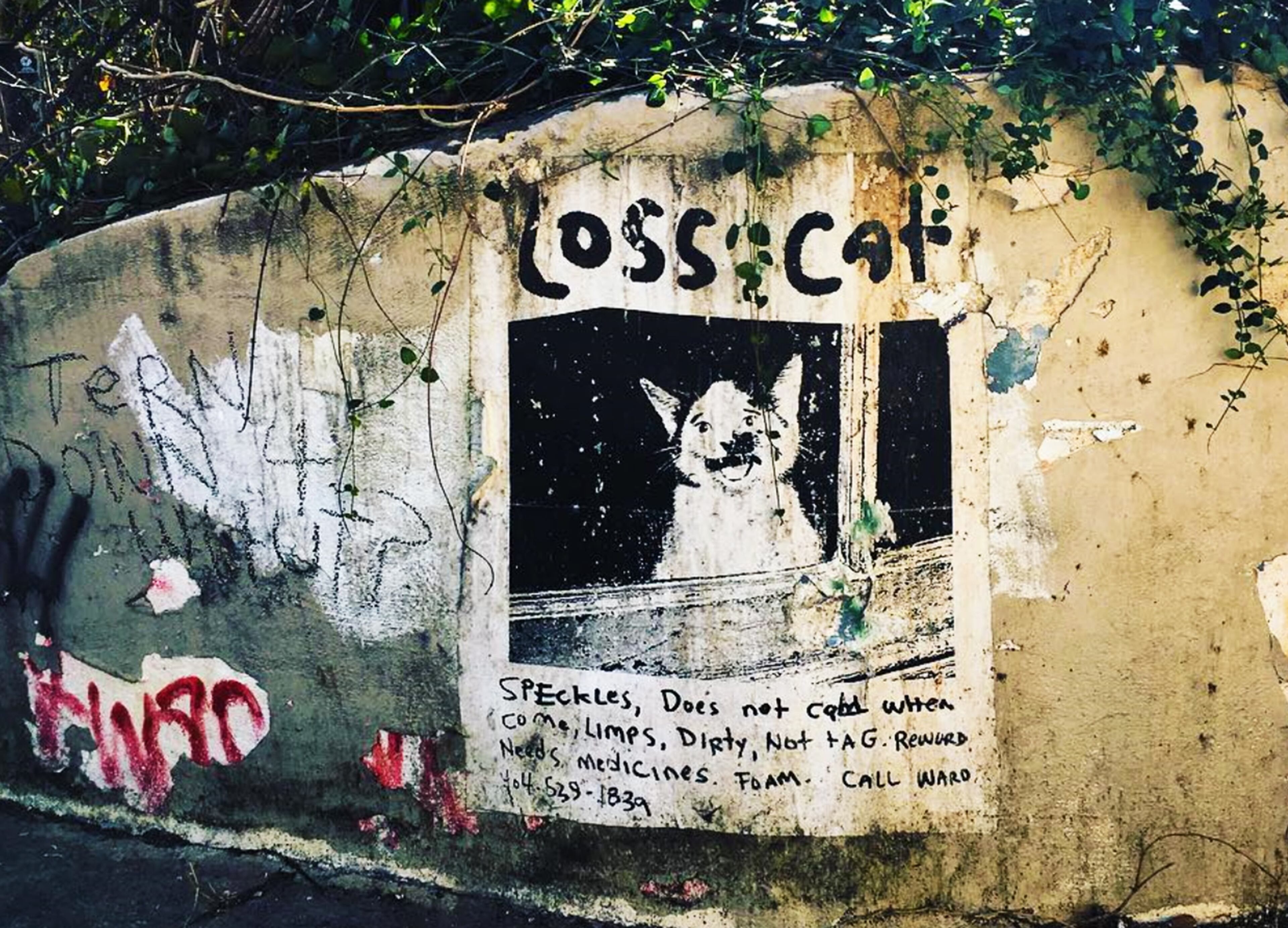
Walker loaned his R. Land piece, “Digital Character Watches,” featuring gators, bug-eyed blue birds and toothless Peter Pans, to the Atlanta Contemporary show. He loves the piece for the subversive way R. Land transforms the saccharine characters of Disney with their “gooey sweetness” into swamp characters.
“It can be brilliant and funny and odd all at the same time,” said Walker. “He just gets this city.”
Candler Park resident and retired financial adviser Jody Owenby started buying Land’s work in 1995 and estimates he owns about 24 pieces, though he has now run out of space to display more work.
When he invited an interior designer to work on his home, Owenby stipulated that she could do whatever she wanted but warned her: “The crazy art stays.”
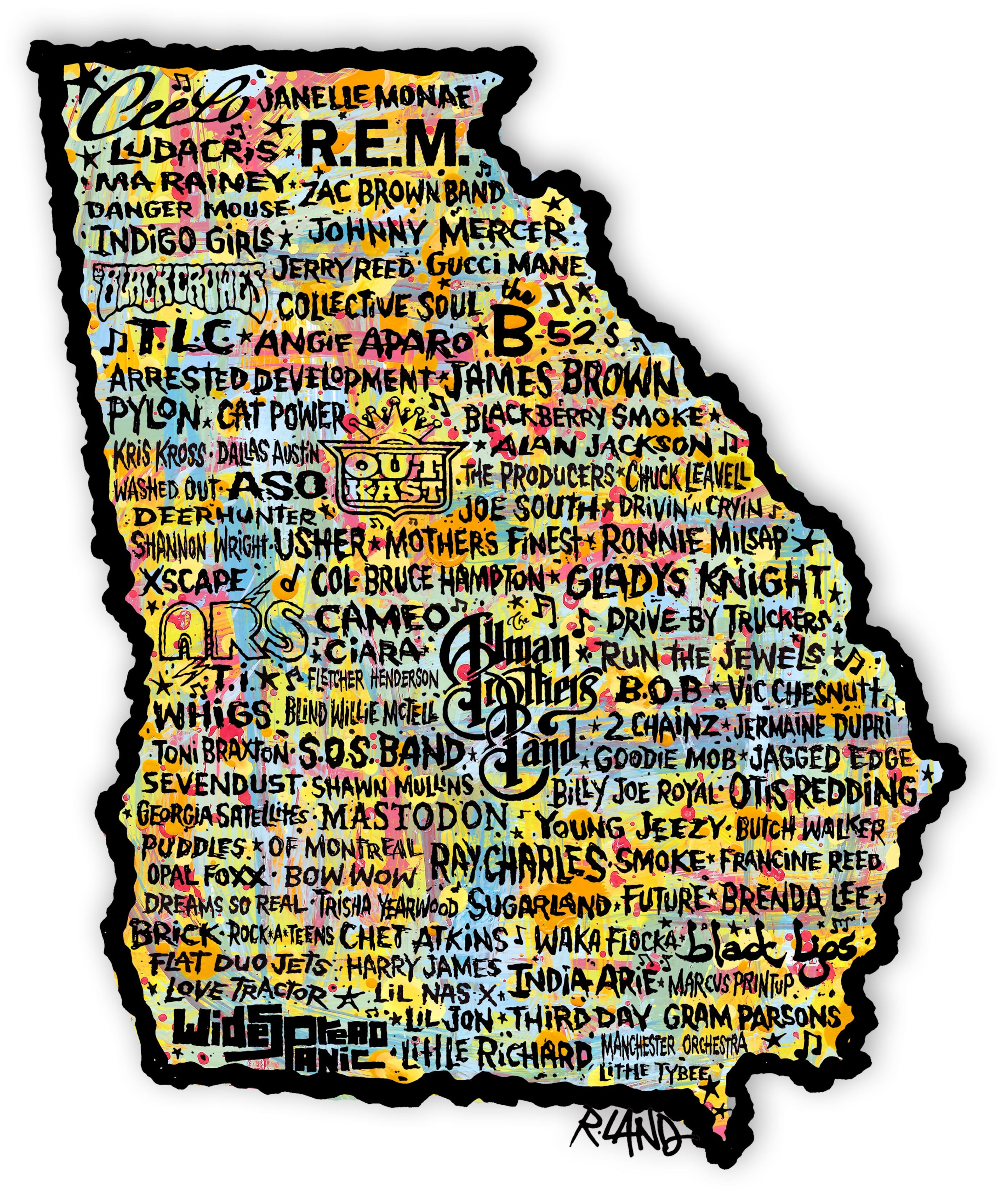
Swamp thing
Though he calls Atlanta his “heart home,” Land’s countercultural sensibility was honed in his native Jacksonville, Florida. At 18 he launched his art career, creating hand painted, silk-screened clothes that friends would wear to New Wave and punk clubs to attract future buyers. He hung his paintings in Jacksonville clubs, hair salons and restaurants. His father was dumbstruck when he sold one of his paintings for $600.
“You sure scammed them!” his father he told him.
For six years Land made art and worked random jobs at places like NAPA Auto Parts while partying and getting his associate degree in communications at the University of North Florida.
A streak of “Weird Florida” clings to Land’s art defined by wackadoodle roadside signage complete with misspellings (“Hot Boil Penust”), the hillbilly wit of tourist-shop tchotchkes and old Florida attractions like Gatorland and Weeki Wachee mermaid shows.
And the state still has its claws in him. He splits his time between North Florida, where most of his family including his wife live, and Atlanta, where his brother Robbie Land is a senior lecturer in film at Georgia State University.
His first professional foray in Atlanta was in 1981 with a short-lived booth at AmericasMart where he sold irreverent greeting cards. They didn’t go over especially well. “I was super green,” he said.
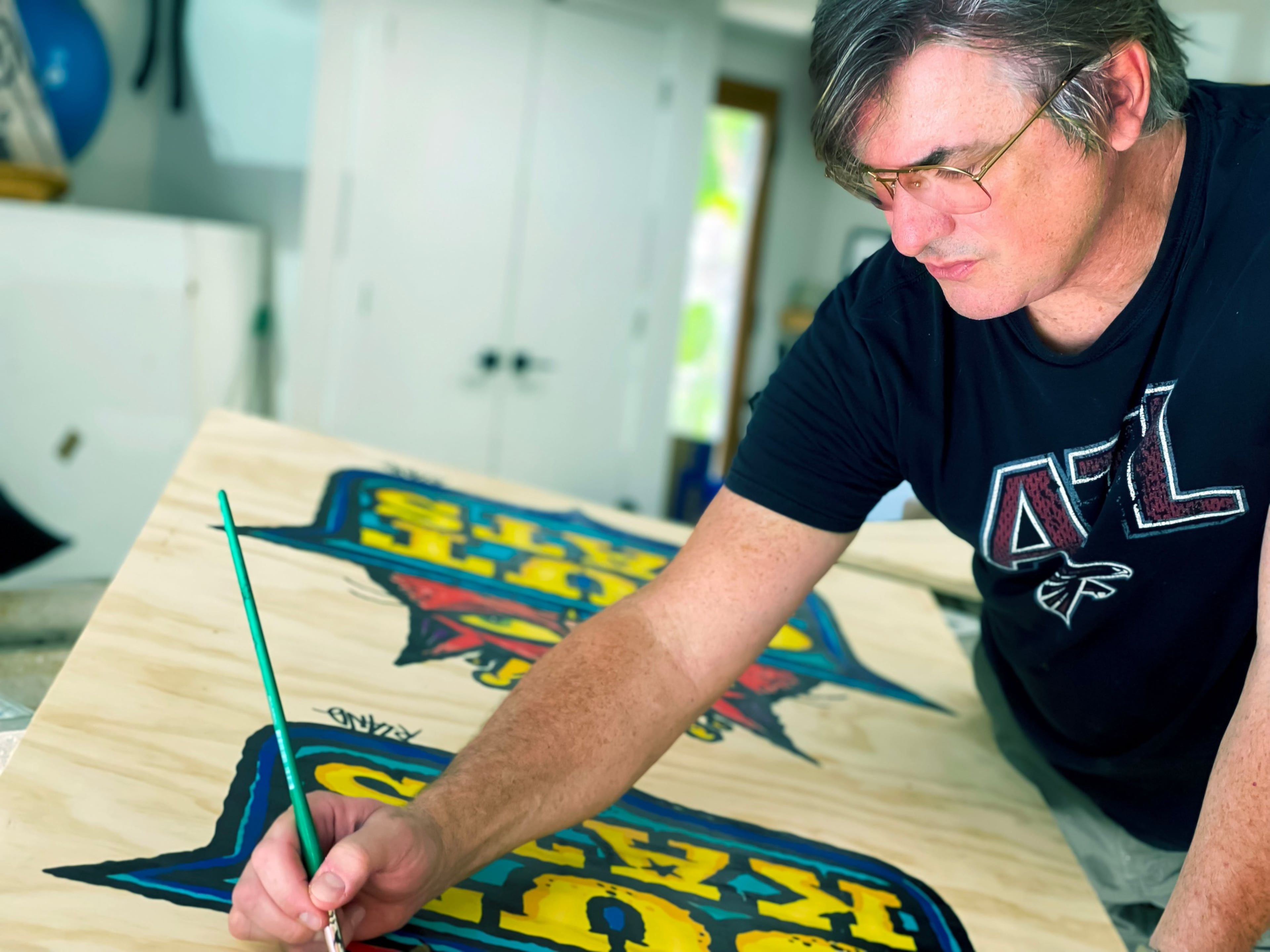
In 1994 he made the leap to full-time residency, making his name by plastering roadways with his “Loss Cats” and “Yuppie Ghetto” signs, as well as the ubiquitous “Pray for Atlanta” hands, which have been tattooed on the chests and forearms of more than a few Atlantans.
That piece is less a nod to the Southern-fried piety of his upbringing and more “a call to activism, because I felt like the city was losing its soul,” he said, referring to the endless strip malls, parking decks and cheaply made residential developments popping up across the city like mushrooms after a hard rain.
He will still occasionally put up a public piece, but not as often as he once did — a bit of the mystery is gone with his current celebrity status. Testament to his staying power, Land has had a studio off Edgewood Avenue for 26 years. He’s proud of the fact that he’s been able to make a living in Atlanta from his art. His last “real” job was in 1988 working as a designer at an advertising firm in Florida.
“If there’s any achievement in my life that’s worthy of great praise, or something that I would want to have on my tombstone, it would be just like, ‘Holy s---. I haven’t had to have a job,’” he said, laughing.
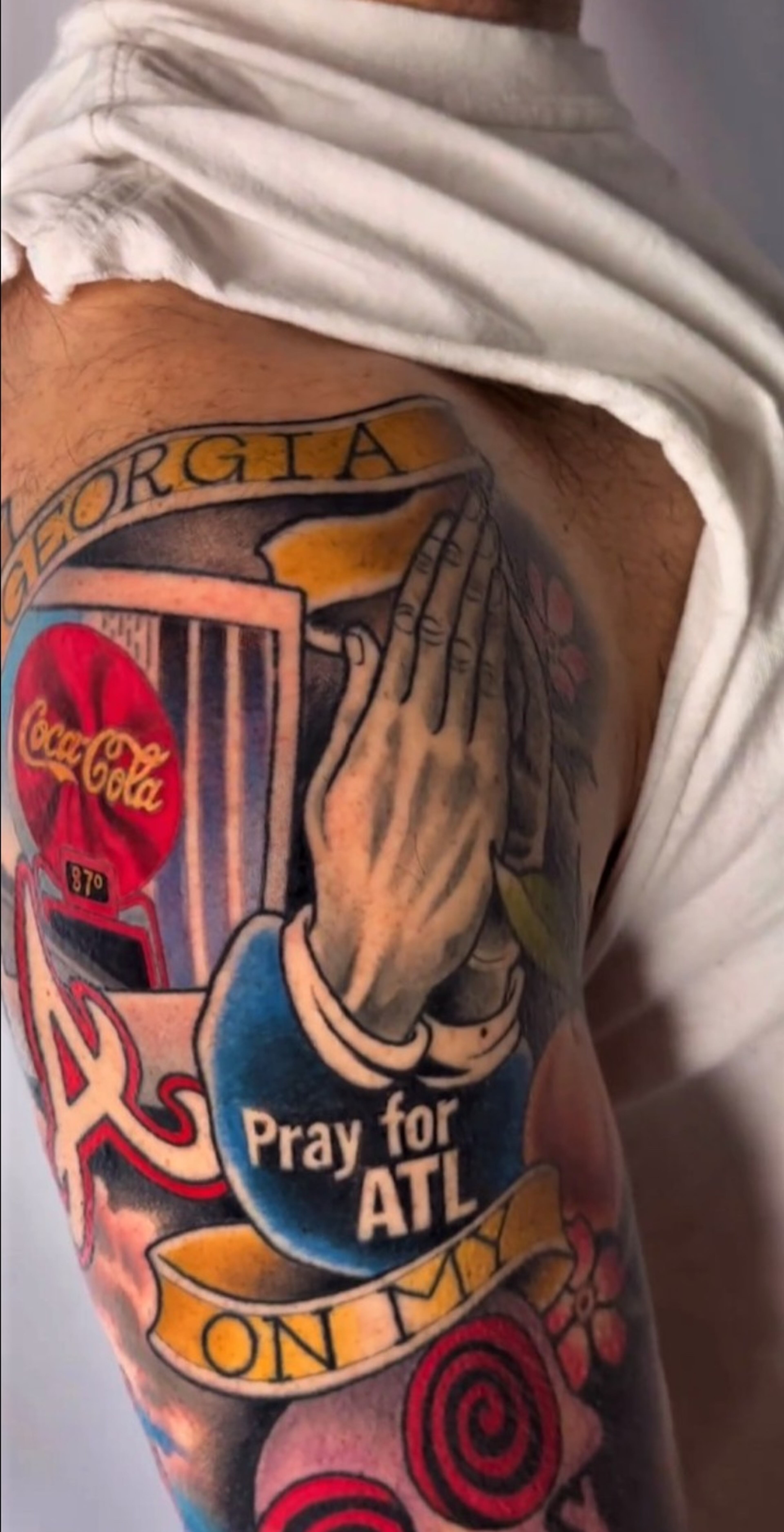
But he said it’s not just about the money.
“I’m not in this to enrich myself. I want to have a conversation with the community and I want to make a living when I do it,” said Land.
As Land has evolved as an artist, so has the city. Longtime Atlantans may remember a time when the city was a flyover afterthought in the eyes of the nation, perpetually in the shadow of Los Angeles and New York.
Owenby does. He moved to Atlanta in 1988 from what he calls “one of the coolest places in the world” — Athens, home to Pylon, the B-52s and R.E.M. “I can tell you from firsthand experience, there was nothing cool about Atlanta” at that time, he said.
That status has definitely changed as Atlanta has morphed into a beacon for the young and exerted its influence in music, culture, film and politics. Travel to another major city these days, whether it’s Tokyo or New York or Chicago, and you’ll notice a sea change in how the city is perceived. Suddenly, Atlanta has game.
It’s hard not to think R. Land played a part in Atlanta’s hard-won swagger.
“[He] put his stamp on Atlanta as it was becoming cool,” said Owneby.
“This place is special in a way that’s unlike other places. You can’t quit it, you still want to be a part of it,” said Land, who admits he’s just as happy these days working on his art and eating a peanut butter sandwich at his Poncey Highland home as he is carousing in search of the next party like he did in his earlier years.
His affection for Atlanta remains the same.
“It’s always felt like the center of the universe to me.”
ART SHOW
“Landmarks: Inside the World of R. Land.” Through Sept. 7. Closing night party and artist talk 6 p.m.-9 p.m. Sept. 5. Free. Atlanta Contemporary, 535 Means St. NW, Atlanta. 404-688-1970. www.atlantacontemporary.org.
